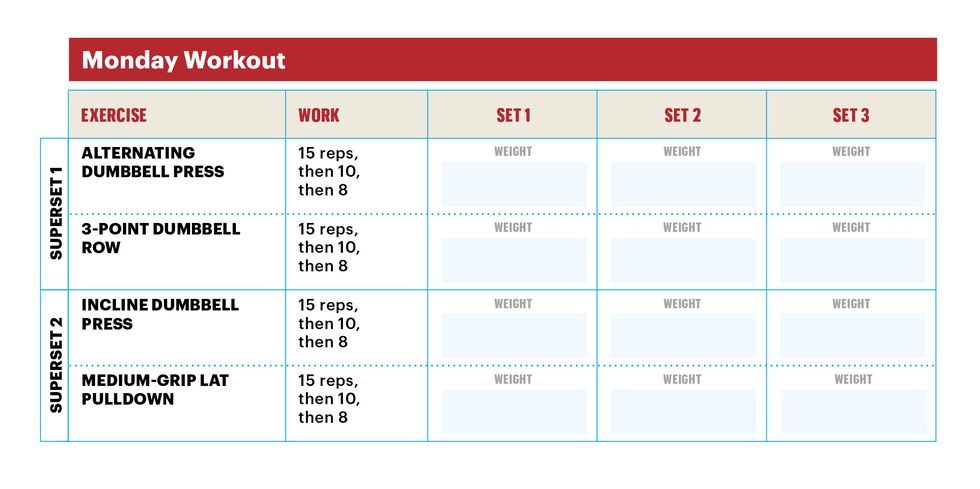YOU MIGHT THINK your days of building muscle are behind you once you’re over 50. Sure, there are some things that you might have waved goodbye to when you hit the half-century mark—keeping up with internet slang, fashion trends, and maybe your hairline—but the ability to make gains shouldn’t be one of them.
That said, you will need to take a slightly different approach than you might have in the past, back when your body didn’t have half as many miles. The key here is training smart. You’ll need a plan to do that, specifically one designed for the considerations that guys of a certain age need to take into account. That’s exactly what we’re offering with the new Men’s Health training program, Max Muscle at 50.
JOIN MVP AND GET THE WORKOUT HERE

Max Muscle at 50 was designed by longtime coach Bryan Krahn, C.S.C.S. He understands the needs of guys who are 50 and up, and not just because of his depth of experience as a trainer working with a wide range of guys. Krahn is 51 himself, and he used the same principles that informed this program to get into the best shape of his life. By following the plan, you can do the same.
The 3 Most Important Training Tenets for Guys Over 50
Krahn designed the Max Muscle at 50 program using these three key training tenets:
Always Come Back Tomorrow
Yes, you can still make gains at 50—but you have to be willing to admit that your body probably can’t withstand the same type of use and abuse you put it through as a younger man. This is where training smart comes into play. Instead of progressive overload being the North Star of your workout program, your biggest focus now will be avoiding injury. How will you do that? Avoiding risk. You’ll perform fewer potentially joint-risky barbell exercises than in other traditional muscle-focused programs, and cut down on the heavyweight reps. Don’t worry though: if you’re working hard, you can still make gains.
Back Work Above All
What’s your favorite muscle group to train? Hopefully the back. The Max Muscle at 50 program gives your posterior muscles lots of attention, in both direct and indirect ways. This isn’t just because Krahn favors broad backs above all else; when you focus on your back, you’ll set yourself up for success by strengthening your spine and and shoulder joints, both of which are important for overall healthy movement.
Train More, Not Less
Yes, this might fly in the face of the first tenet to avoid injury—but training more isn’t about junk volume. Once your over 50, you need to use it (“it” being your body and hard-earned strength and muscles) or lose it. You’ll have workouts on four days of the week in the Max Muscle at 50 program, with an optional fifth day when you’re feeling fresh.
JOIN MVP AND GET THE WORKOUT HERE
What the Max Muscle at 50 Program Looks Like
You’ll use an easy-to-download PDF for this plan, which includes all of the introductory information, exercise descriptions and reference images, and an editable table of the program you can use to track your progress when you’re in the gym. Just pull up the file on your phone, tablet, or computer (or if you want to go old school, print it out) and you’ll be ready to take on your workouts.
Here’s what the table looks like for the top section of a typical training day:

Don’t worry if you’re not a training expert, either. All of the exercises in the program are explained at length, with the specific cues you’ll need to do them the right way. You’ll be able to reference every exercise using clear diagrams, like this:

What You Need for the Max Muscle at 50 Program
You’ll train for four days per week in this program. Monday is upper body training, Tuesday lower body, Thursday total-body push, Friday total-body pull. There’s also an optional fifth day for arm-building supersets—but remember, you should listen to your body when you decide how much you’re going to work out. You’ll need a whole gym’s worth of equipment for the workouts (think cable towers, adjustable benches, and rowing machines), so you’ll probably need to do the workouts in a well-stocked gym.
The program runs for four weeks. After that, if you’ve put in the work, you should be on the road to results. Ready to take on the challenge? Get access to the plan here.
